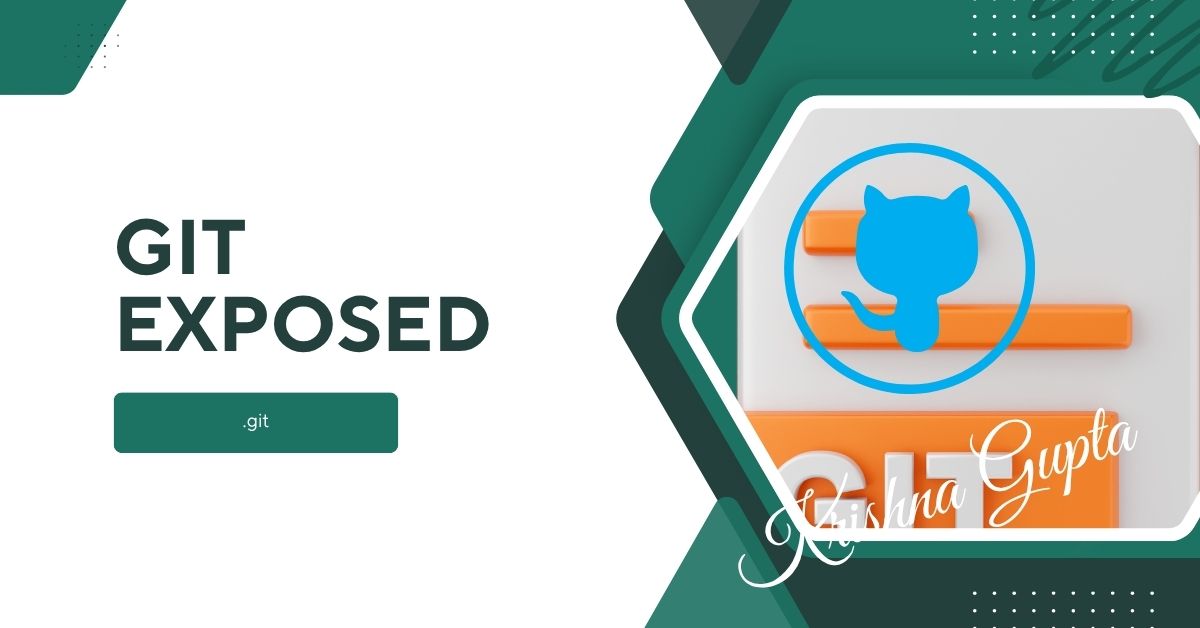From Exposed .git Repo to Full Database Access: How a Tiny Misstep Triggered a Major Security Risk
In the realm of cybersecurity, small misconfigurations often have disproportionately catastrophic consequences. One seemingly minor oversight – an unintentionally exposed .git repository – can serve as the ignition point for a full-blown data breach. In this post, we will walk through a real-world example where an exposed .git repo led to authentication bypass, blind SQL injection, and eventually full database access at a university.
This case study is designed for Penetration Testers and C-Suite Executives alike, offering critical lessons on risk mitigation, business impact, and the ROI of proactive security measures.
1. Introduction: The Power of a Small Oversight
The cybersecurity landscape is riddled with examples where an innocuous error led to devastating outcomes. Particularly, configuration errors such as exposed repositories, open directories, and default credentials continue to top vulnerability statistics.
For executives, the lesson is simple: technical gaps translate into business risks. For penetration testers, it is a reminder that real-world exploitation often requires little more than patient observation and a keen eye.
2. Discovery of the Exposed .git Repository
Our story began during a routine vulnerability scan. The tool flagged the presence of a .git directory on a publicly accessible web server belonging to a university’s student portal.
Key Observations:
- /.git/config was accessible, revealing remote origin URLs.
- /.git/HEAD and other objects were retrievable.
- Using tools like git-dumper or GitTools, we reconstructed the entire source code of the application.
Real-World Tip: Always check for open .git directories, .svn/, .hg/, or .DS_Store files – they often disclose sensitive internals.
3. Analysing the Source Code: Authentication Bypass
With full access to the application’s source code, we began a thorough review. Within minutes, we discovered a critical flaw:
- A hidden GET parameter (e.g., ?admin_access=true) in the login controller effectively bypassed authentication checks when set.
This meant that anyone who appended this parameter could log in as an administrator without a valid username or password.
Demonstration:
<https://target-uni.edu/admin/login?admin_access=true>
Result: Access granted. No authentication needed.
Security Insight: Hidden parameters or backdoor bypasses should never exist in production code. Hardcoding such functionality is equivalent to leaving the keys under the doormat.
4. Management Tool Access: Blind SQL Injection
Once inside the management dashboard, the next phase was manual exploration.
An “Advanced Search” feature allowed administrators to query student information. Testing standard SQL payloads (e.g., ‘ OR 1=1 –) yielded no immediate results, but time-delay payloads (SLEEP(5)) revealed a blind SQL injection vulnerability.
Proof of Concept:
POST /admin/search-students
Payload: name=’ OR IF(1=1, SLEEP(5), 0) —
Observation: The page response was delayed by 5 seconds, confirming that injection was possible.
5. From Injection to Database Compromise
Using a combination of time-based inference techniques and tools like sqlmap, we extracted:
- Student names, emails, addresses
- Staff credentials (some stored in weakly hashed formats)
- Financial aid information
- Academic records
Had a malicious actor exploited this, it could have resulted in:
- Breach of privacy laws (e.g., GDPR violations)
- Reputation damage
- Legal liabilities
- Financial penalties
6. Business Impact and Risk Amplification
For the C-Suite, here’s the business risk landscape this technical vulnerability created:
| Impact Area | Consequence |
| Regulatory Compliance | GDPR breach penalties |
| Financial Loss | Potential class-action lawsuits |
| Reputation Damage | Loss of trust among students and parents |
| Operational Disruption | Emergency incident response, regulatory audits |
| Strategic Risk | Loss of future partnerships, accreditation risks |
A simple .git misconfiguration had the potential to cascade into multi-million-dollar damages.
7. Lessons for Penetration Testers
This case offers practical lessons for penetration testers:
- Never underestimate small findings: .git exposures, open .env files, or backup folders can often lead to serious breaches.
- Prioritise manual code review: Even if automated scans miss vulnerabilities, source code can reveal hidden issues.
- Chain vulnerabilities creatively: Individually, authentication bypass or blind SQLi might seem moderate. Together, they become devastating.
8. Strategic Insights for the C-Suite
From a leadership standpoint, this incident underscores:
- Security is not just IT’s problem: It is a business risk that must be overseen at the highest levels.
- Invest in Secure SDLC (Software Development Life Cycle): Security reviews must be integrated into every development stage.
- Prioritise external audits: Regular penetration testing, source code reviews, and vulnerability assessments are non-negotiable.
- Incident Response Planning: A swift, pre-planned reaction to breaches can significantly mitigate damage.
ROI Insight: For every $1 spent on proactive security measures, companies can save $7 in breach costs (Source: Ponemon Institute).
9. Preventive Measures and Best Practices
To avoid similar disasters:
For Developers:
- Never deploy .git folders to production.
- Use .gitignore appropriately and validate deployment artefacts.
- Remove debug parameters, hardcoded bypasses, and test accounts before release.
For DevOps:
- Automate scanning for exposed files and sensitive artefacts.
- Restrict server file access with .htaccess or server configs.
For Organisations:
- Conduct regular VAPT (Vulnerability Assessment and Penetration Testing).
- Train developers in secure coding practices.
- Create a culture where security is everyone’s responsibility.
10. Final Thoughts: Small Holes Sink Great Ships
This incident exemplifies the butterfly effect of cybersecurity: a seemingly minor misstep snowballed into a full-fledged breach scenario. From an exposed .git directory to full database access, the chain of events shows how cybersecurity hygiene is critical at every level — development, operations, leadership.
For the C-Suite, the takeaway is clear: security investments are business investments.
For penetration testers, it reinforces the age-old adage: assume nothing, test everything.
Vulnerability Chain

Exposed .git ➔ Authentication Bypass ➔ Management Access ➔ Blind SQL Injection ➔ Database Compromise ➔ Breach Risk